|
|
|
|
|
TRANSMITTER & TOWER PAGE
Engineering information provided by Joel "J. R." Miller, Bob
McClanathan and others.
Here is a look at the transmitter and tower facilities from the earliest
days when there was just a hole in the ground. We
will add more as we can dig up the photos. Be sure to check out
The Studios page.
|
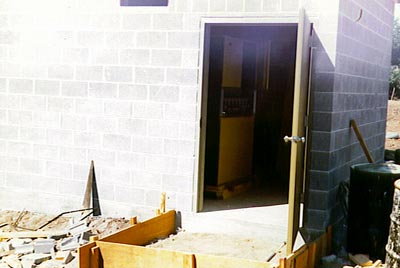
If you look
closely, you can see KQIV's AEL FM-25KD transmitter (Ser. No.
008) sitting on a pallet inside the unfinished building. |

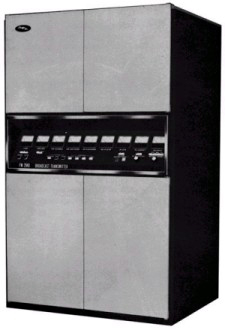
American Electronic
Laboratories (AEL)
FM-25KD transmitter and the AEL logo from the KQ4 era. |
|
J.R. Miller remembers: It was a big day. Saturday, August 12,
1972. After several weeks of installation work, KQIV's
consulting engineer Bob McClanathan was ready to test the
transmitter. Manufacturers' representative Tom Aye flew in from
Sunnyvale, California, and Don Richardson, AEL Transmitter
Division Manager, arrived from Lansdale, Pennsylvania, for the
event. Bob had borrowed a 25KW air-cooled dummy load for the test,
but it immediately failed upon application of power. Now what? |
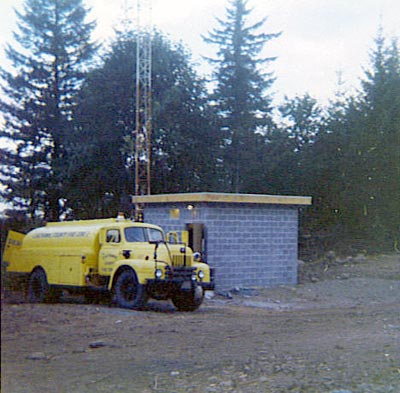
Clackamas County Fire District tanker
at the KQIV transmitter. |
|
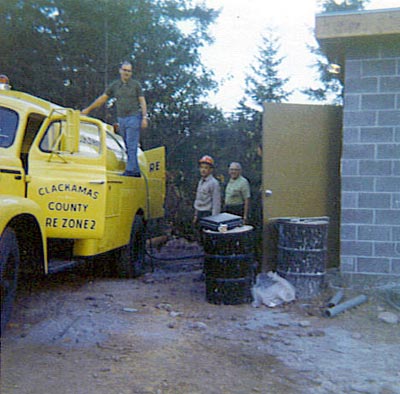
(Left to right): Don Richardson, a county
firefighter, and Tom Aye pose with
the tanker that saved our day.
|
Bob had an idea. He knew that Portland's KPAM-FM had a water-cooled
dummy load that would handle the job, but there wasn't adequate
running water available at the transmitter site. So, he assigned
me the detail of finding a water tanker while he headed into
Portland to see if he could borrow KPAM-FM's dummy load. |
|
Now, where do you find a tank truck full of water late on a
Saturday afternoon? After thinking on it a few moments, I drove to
downtown Oregon City with a possible source in mind. After
explaining my dilemma to the nice firefighters at the Clackamas
County Fire District station, I was relieved when they said they'd
be happy to help, and would be up in just a little while. Bob got
back with the dummy load and its hoses were connected to the
tanker. As the cool waters flowed, the transmitter tests were
completed successfully. KQIV now was ready to attach the
real antenna and hit the airwaves. |
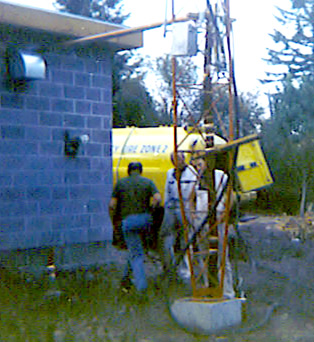
(Left to right): Don
Richardson, tower man
Frank Baker, and Bob McClanathan. The
transmitter is putting its full power into the
dummy load as Bob measures the output
with a Bird wattmeter. |
|
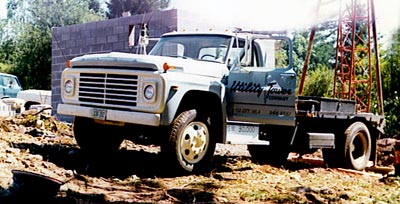
The brawn
behind the job. A Utility Tower Company boom truck, whose winch
pulled the tower and antenna sections up to their new resting
places. |
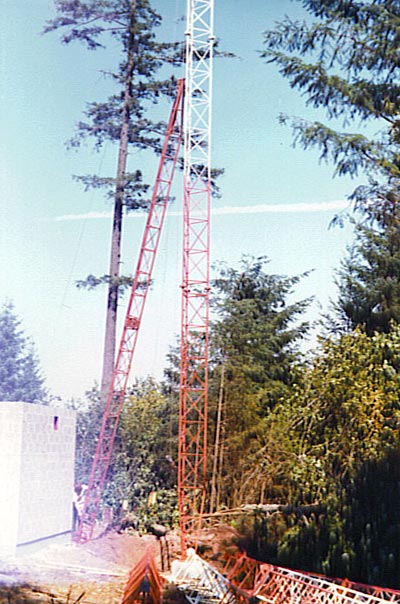
V. G. Duvall
from Utility Tower Company prepares to hoist a gin pole up the
partially completed KQIV tower. |
|
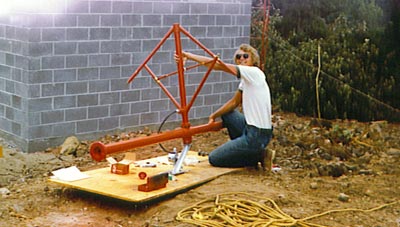
V. G.
Duvall prepares one of the eight elements of KQIV's Jampro
JSCP Penetrator antenna that were hoisted skyward. |
Jampro logo from the KQ4 era and
Jampro JSCP Penetrator
side-mounted
antenna. Three bays shown in photo. |
|
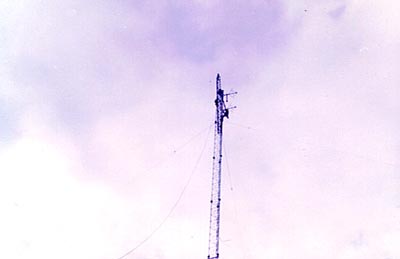
At
190 feet up, V. G. Duvall installs the second of eight antenna bays. |
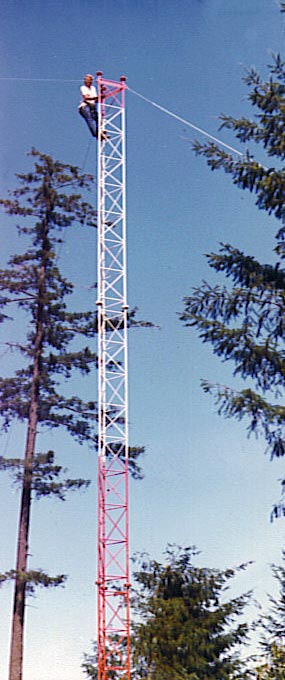
V. G.
Duvall fastens a guy cable to the partially built KQIV tower. |
|

Chief
Engineer J.R. Miller stands on a huge mass of concrete that encased
one of the three guy cable anchors for the 200-foot KQIV
tower. |
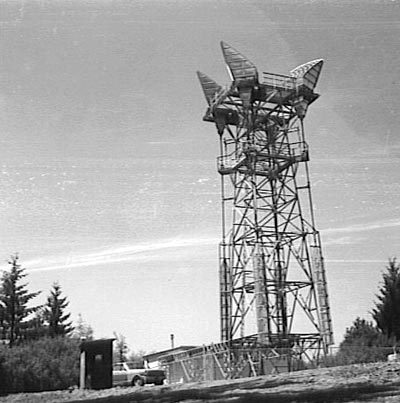
The KQIV
transmitter's next door neighbor -- a Pacific Northwest Bell
Telephone microwave repeater station. (Note J.R. Miller's Chevy II,
which later became KQIV owner Walter Kraus' little KQ4Mobile) |
|